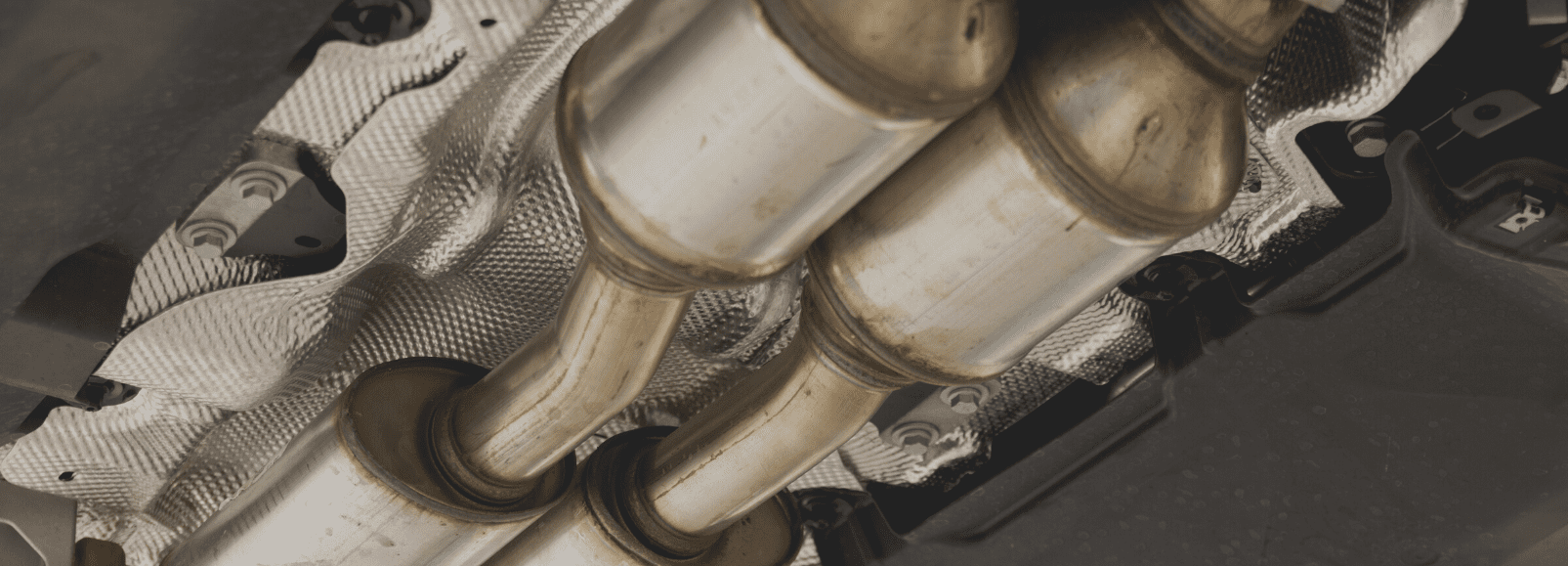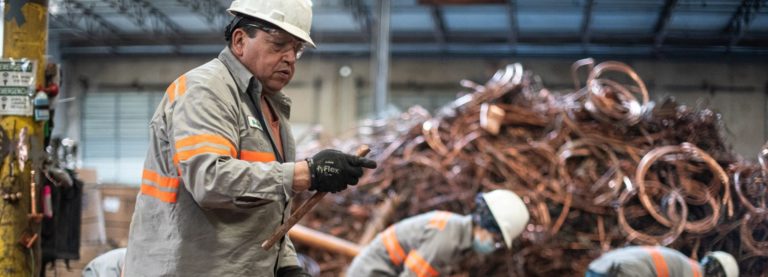Scrap metal theft is a problem in the US, affecting all corners of society. But what do scrap metal thieves steal exactly, who do they target, and what can you do to stop them?
The victims of scrap theft can be anyone, from individuals to businesses and even scrap/salvage dealers. These criminals are stealing copper from abandoned houses and even cemetery statues and trinkets. Other common targets include everyday items and vehicle parts, especially catalytic converter theft. The way to prevent these crimes is through knowledge and behavior changes.
There are several ways to deter theft, and this piece looks at how you can do just that. But first, a look at the impact scrap metal theft has on its victims and the types of crime they commit.
How Scrap Metal Theft Affects Victims
Metal is everywhere you look, making it easy pickings for scrap thieves. It’s used in jewelry, construction, everyday utensils, wiring, vehicles, electronics, and much more.
But when thieves steal from individuals, it’s more than an inconvenience and financial loss. People often feel violated when theft occurs on their domestic property. And stolen material may leave behind a need for significant repairs or replacement. Moreover, theft from vehicles and buildings could cause safety issues by affecting their function or structural integrity.
Some Metal Theft Is on the Decline
It’s not all bad news, as the infographic below illustrates. This 2019 National Insurance Crime Bureau Report shows that metal theft claims have fallen considerably since 2014 [1].
No Time to Let Your Guard Down
Despite the decline in some forms of scrap metal theft, this is not time to become complacent. Unfortunately, the scourge of scrap crime continues to affect individuals, private homes, and businesses in the US. And as metal prices continue to rise, this downward trend could quickly reverse. In fact, the theft of catalytic converters for precious metals has seen a sharp increase recently (more on that soon).
Methods Used by Scrap Metal Thieves
Scrap metal thieves are varied. Some are opportunistic while others are well-organized criminals. In either case, they are bold, confident, and fearless as they pursue these brazen acts of theft. Criminals often cause significant damage in their wake, such as by ripping radiators and air conditioning units off building walls to access copper piping.
Some thieves pose as renovation contractors. These criminals steal metal and strip copper from vacant properties in broad daylight. Others use a buddy method where one person drives a getaway vehicle. The other quickly loads the van or truck with empty beer kegs and whatever else they can snatch. And tech-savvy types exploit Google Earth to scan neighborhoods as they search for bulk scrap left outside of buildings.
Thieves Targeting Vehicle Catalytic Converters
One type of metal theft that is on the rise is the theft of catalytic converters. These exhaust emission controls are laden with the precious rare earth metals rhodium, palladium, and platinum, making them highly valued for recyclers.
One ounce of these materials can fetch up to $20,000. That’s why they’re such a hot target for criminals. Texas alone has seen a 5,300% rise in catalytic converter crime since 2019, but it’s also a growing problem nationwide [2] [3] [4] and internationally.
8 Tips to Protect Your Catalytic Converter from Theft
You can take several measures to reduce the risk of having the catalytic converter ripped out of your vehicle. Below are eight anti-theft tips issued by AAA.
- Park in well-lit areas and as close to building entrances as possible
- Store high clearance vehicles (SUVs/trucks) in secure locations
- Get your converter welded to the vehicle’s frame
- Attach security devices like hard-duty locks to your converter
- Consider investing in a purpose-made converter-protection device
- Engrave your vehicle identification number (VIN) onto the converter
- Calibrate your car alarm to sound on vibration
- Purchase an insurance policy that covers catalytic converter theft
Criminals don’t like to hang around for long. They know the longer it takes to commit a crime, the more likely it is someone will see and report it. That is why thieves primarily go after the most vulnerable targets, “easy pickings.”
While none of the above tips will truly stop a criminal if they’re motivated to steal your catalytic converter, even a minor deterrence will often push a criminal to move on to an easier target.
Other Metals Targeted by Thieves
The most sought-after metals are steel (ferrous), aluminum, copper, and brass (non-ferrous), in that order. Ferrous metal contains iron and is magnetic and strong. Non-ferrous metals don’t include iron, so they’re lighter and non-magnetic. Thieves target these four metals because they fetch a good price. They are also easy to source and fast to sort [5] [6].
Here’s a breakdown of the typical items made from the four most targeted metals that are targeted for theft.
Steel (including iron/cast iron): angle products, beams, channel pieces, machines and tools, pipes, plates, railings, roofing, sculptures, stainless steel sinks, radiators, vehicles, etc.
Aluminum: construction siding, castings, door frames, office partitions, poly-coated aluminum, sheets/bars, signs, thermal breaks, truck/car rims, and window frames
Copper: bar stock, cellular towers, piping, railroad parts, sheets, stripped wire, telephone cables, water well tubing, and copper turnings
Brass: bar stock, bearings, bushings, handles, railings, musical instruments, plumbing fixtures, turnings or shavings, valves, and vehicle radiators
The table below shows where thieves look for these metals and the regularly targeted items:
| MOST TARGETED LOCATIONS | MOST TARGETED SCRAP ITEMS |
| Churches and graveyards Construction sites Farmyards Unoccupied/historical buildings Hospitals and medical clinics Playgrounds Railway networks Residential streets Scrap left outdoors Scrapyards Outdoor markets Stores (shoplifting) Vehicle theft | Bronze plaques, statues, trinkets Abandoned vehicles (any) Air conditioning units Metal beer kegs Catalytic converters Copper cable/wiring/pipe Fencing and reinforcement mesh Outdoor household items Iron gates Manhole covers Motorcycles/bicycles Street furniture Medical devices |
 Anti-scrap Metal Theft Tips for Homes
Anti-scrap Metal Theft Tips for Homes
Metal thieves target homes, too. They use newspapers, real estate publications, and the internet to find lucrative target properties. Without security deterrents, house raiders can cause massive property damage in very little time. Also, never leave large scrap metal items outdoors, such as old washing machines, refrigerators, dryers, construction materials, etc., or you’re inviting trouble.
10 Tips to Protect Your Metal at Home
Here are a few other practical tips to help reduce the risk of scrap metal theft from homes:
- Keep metal items indoors, covered, or locked away when not in use
- Display ‘No Trespassing’ notices around your property
- Improve perimeter security (fencing, dense hedging, locks, chains, lights, etc).
- Lock all doors and windows (including higher floors) before leaving home
- Ask trusted neighbors to watch your property when you go away
- Fit your vehicles with alarm systems and other theft deterrents
- Write down and safely store the serial numbers of personal property
- Mark metals using engraving, paint, or hard-to-remove decals
- Report suspicious persons and vehicles to law enforcement
- Be mindful about who you let onto your property
These measures may seem obvious but people often overlook them.
 Anti-scrap Metal Theft Tips for Businesses
Anti-scrap Metal Theft Tips for Businesses
The scrap recycling industry has become part of the crime prevention task force for helping to tackle metal theft. Geomet is an established, committed leader of scrap metal recycling in Dallas. We have decades of experience building quality relationships with trusted sellers. Our advice to businesses is to protect their source as the best defense against material theft.
Use the tips below to determine which measures you may still need to consider.
- Secure all equipment in locked rooms or storage units when not in use
- Keep outdoor equipment in well-lit areas protected by perimeter security
- Place ‘No Trespassing signs around your business property
- Install CCTV security systems that record and store footage
- Cleary publicize the security/surveillance system above is in use
- Secure buildings with door/window locks and deadbolts
- Have minimal landscaping to remove potential hiding places for thieves
- Remove anything that thieves might use to climb walls or access roofs
- Don’t receive and store supplies until you need them whenever possible
- Secure new deliveries of material immediately upon arrival
- Mark metal items using engraving, paint, or hard-to-remove decals
- Make sure your insurance covers metal theft
Creating a comprehensive list of your metal tools, materials, and equipment is wise. Also, consider taking photos and writing down serial numbers where they exist. Keeping visual records like this speeds up insurance claims if thieves rob your company.
Remove Scrap Metal from Prying Eyes
Don’t let your scrap metal build up and attract thieves. GEOMET delivers and removes secure containers, hoppers, roll-off bins, and personal storage bins right to your door. It pays to keep your scrap materials tidy, organized, and ready-to-pickup, whether you’re a company or an individual. Alternatively, drop your scrap metals off in person for fast processing and guaranteed competitive prices.
Contact GEOMET Recycling to Learn More
How Recyclers Identify and Deter Stolen Scrap
Laws introduced in 2013 to regulate scrap metal transactions have helped deter theft as seen in the earlier graphic. For example, the rules instruct recyclers and scrap metal dealers to document all dealings. That includes asking sellers to give proof of identity before the trade can take place. These measures greatly discouraged thieves from cashing in on their ill-gotten gains through the legitimate channels [7].
Identifying Opportunistic Metal Thieves
The staff at Geomet Recycling are trained to spot potential scrap metal thieves. For instance, offenders typically cut stolen copper wire into sections between 2–6 feet. Other red flags are sellers arriving with substantial scrap tied to the roof of a regular car. Or with metal loaded into the back of a noncommercial truck, with no company insignia on display.
Scrap Metal Anti-theft Legislation
In recent years, all 50 US state legislatures have passed—and continue to review—various laws to combat scrap metal theft. These regulations impose industry requirements such as accurate record keeping and purchase restrictions. Additionally, state laws are constantly revised and updated to address metal theft crimes as they evolve [8].
ScrapTheftAlert
ScrapTheftAlert is a tool that allows police and law enforcement agencies to alert the scrap industry about incidents of significant material theft in the US and Canada. The system broadcasts alerts from registered users to subscribers by email within a 100-mile radius. That way scrap industry vendors can keep an eye out for someone trying to sell the stolen material.
How Individuals Help with Crime Prevention
Stealing valuable metal is a serious concern in the industrialized world, affecting all areas of the globe and societies. Individuals who suspect scrap metal theft are encouraged to report their suspicions to local law enforcement. You can also help by raising your concerns to your city council, local elected officials, and by contacting your congressperson.
Final Thoughts
Metal theft continues to be a menace to society targeting businesses and individuals. And the high cost of automobile catalytic converter replacement is worrying a lot of vehicle owners in the US. Although there is no way to stamp these crimes out completely, there are measures we can all take to significantly reduce the risks and prevent the easy sale of stolen goods.
Resource Links
- https://www.nicb.org/news/news-releases/metal-thefts-continue-downward-trend
- https://abc13.com/catalytic-converter-theft-metals-platinum-rhodium/11765338/
- https://www.wfaa.com/catalytic-converter-thefts-texas/
- https://www.nicb.org/catalytic-converter-thefts-skyrocket-across-US/
- https://popcenter.asu.edu/content/metal-location-and-type-1/
- https://thecrimepreventionwebsite.com//metal-location-and-type-2/
- https://www.ncsl.org/research/metal-theft-prevention-laws-2013/
- https://www.isri.org/State-Metals-Theft-Statutes/






